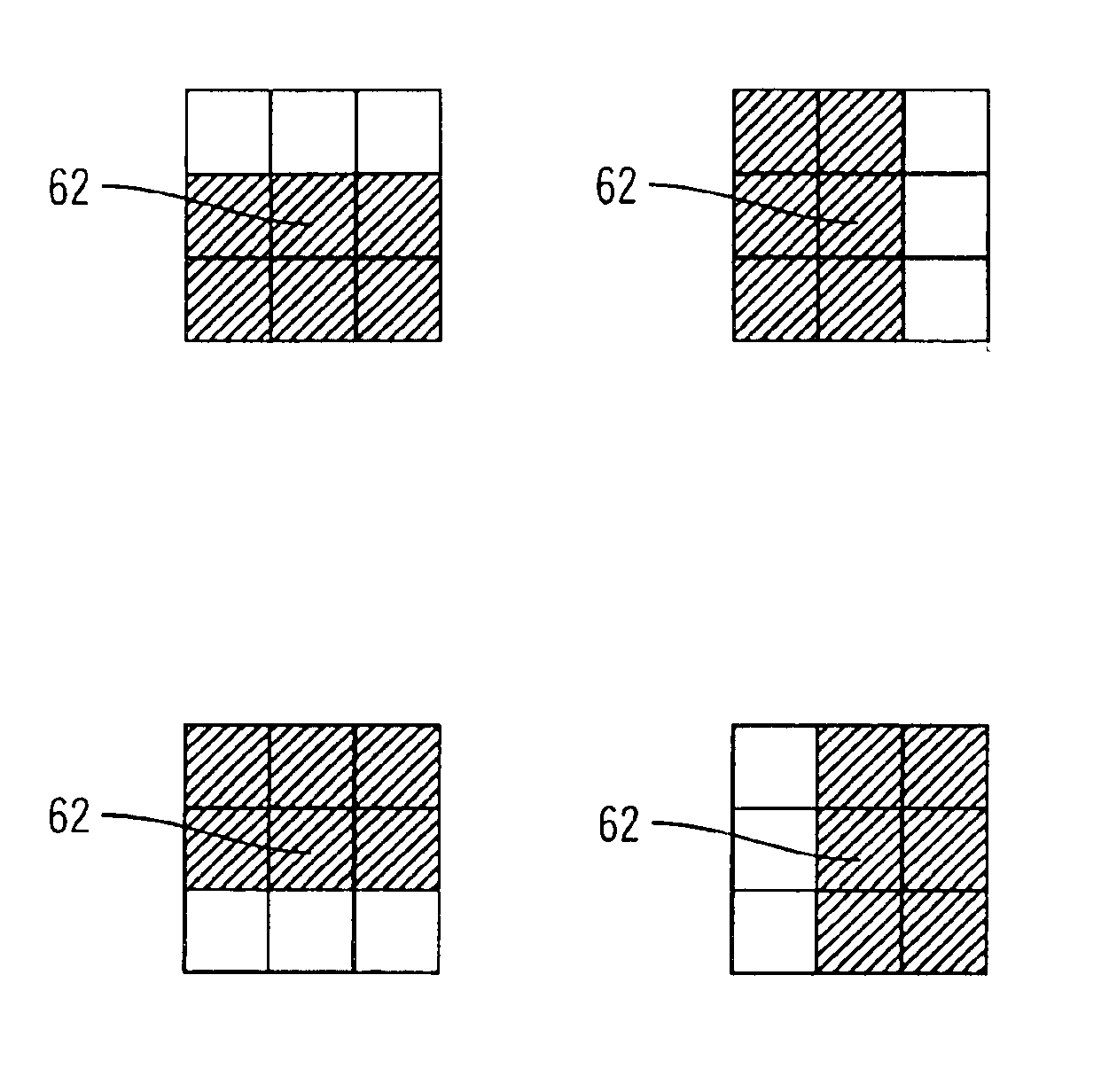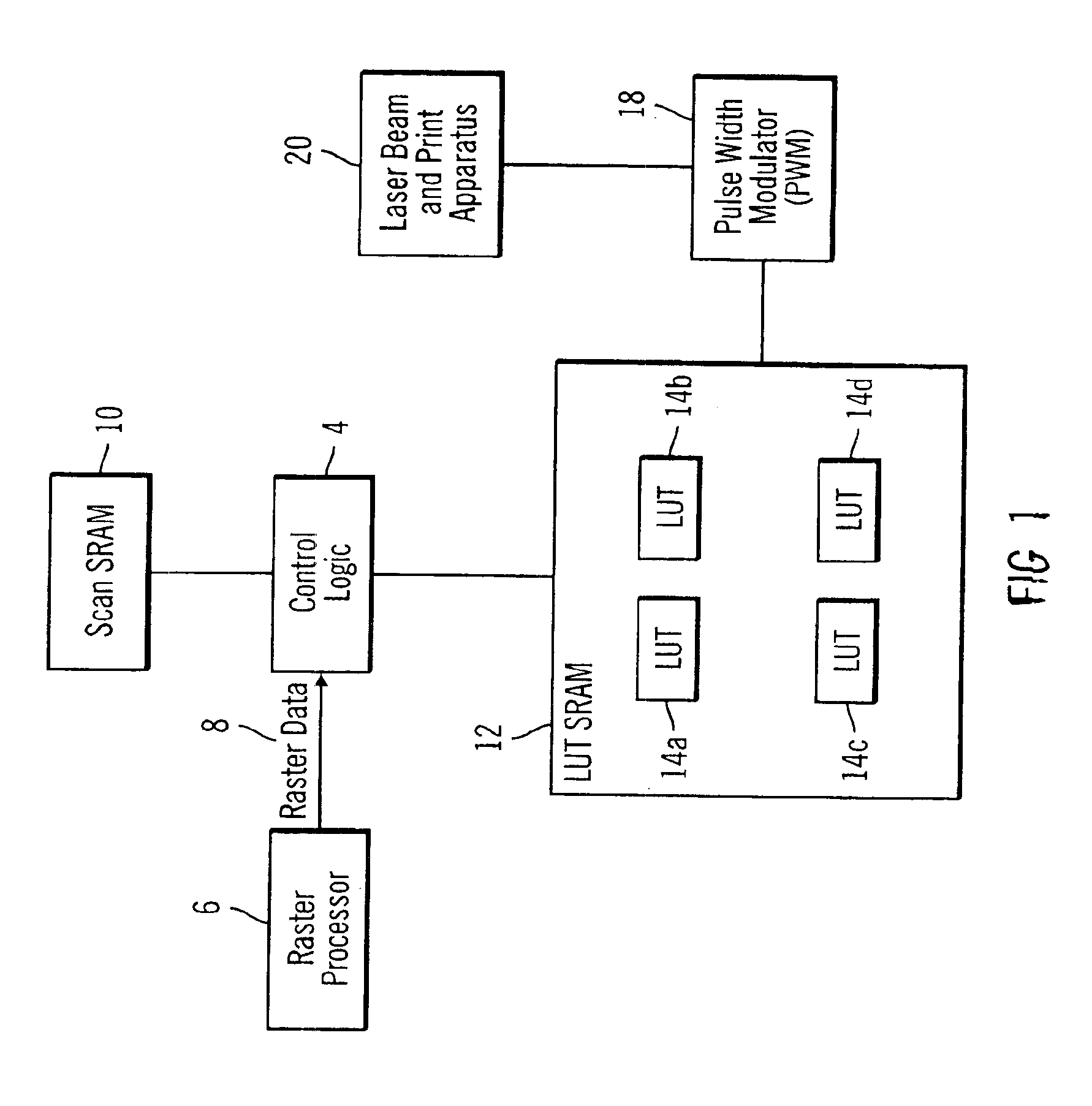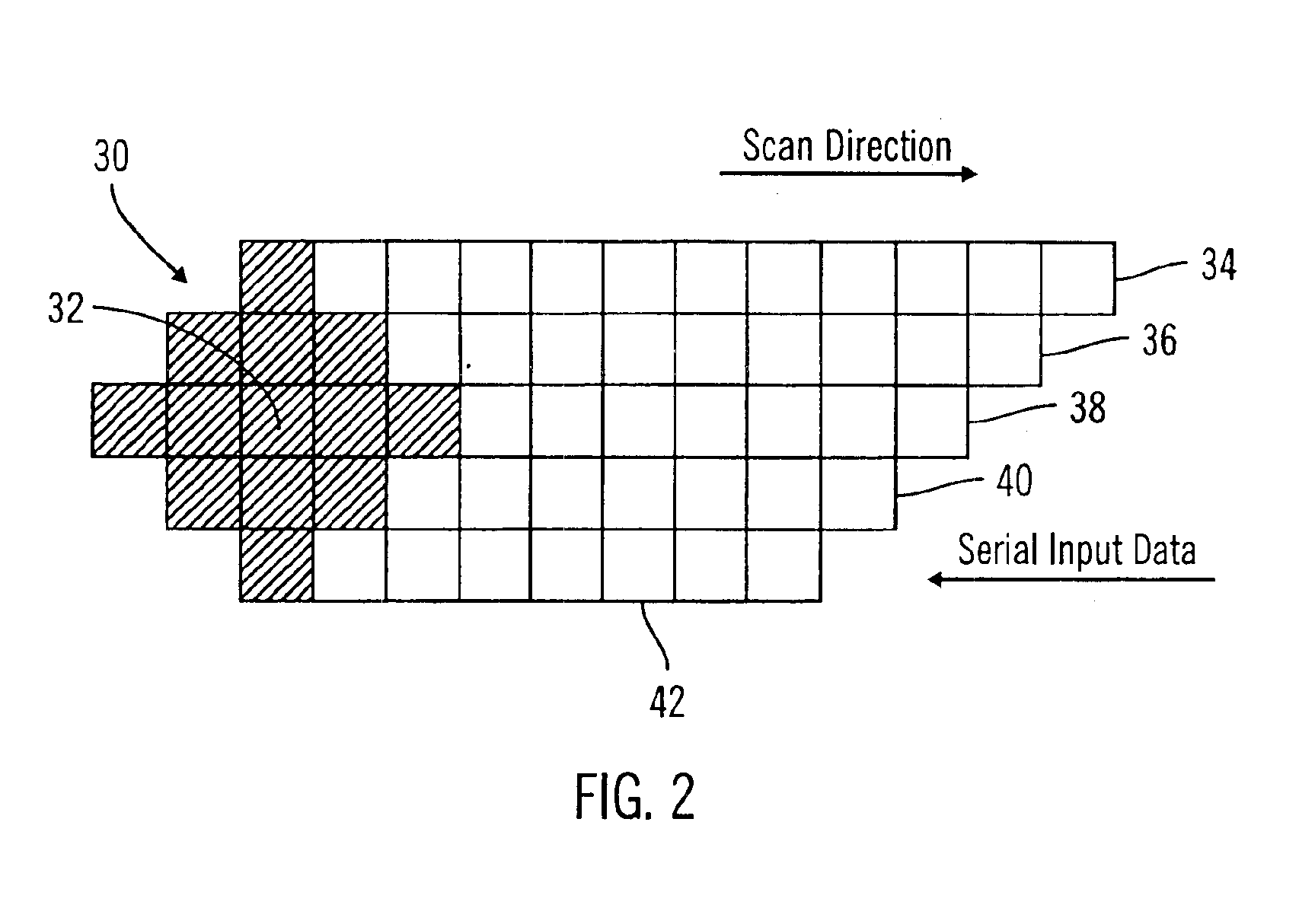Method, system, and program for reducing toner usage in print output
a technology of toner usage and print output, applied in the direction of digital output to print units, visual presentation using printers, instruments, etc., can solve the problems of increasing the manufacturing cost of printers, substantially increasing electromagnetic radiation (emi), and inability to reduce toner usage in all black areas, so as to reduce toner usage, reduce emi radiation, and reduce the effect of toner usag
- Summary
- Abstract
- Description
- Claims
- Application Information
AI Technical Summary
Benefits of technology
Problems solved by technology
Method used
Image
Examples
Embodiment Construction
[0012]To overcome the limitations in the prior art described above, preferred embodiments disclose a method, system, and program for reducing toner in an image comprised of raster pel data. A determination is made of pels surrounding subject pels. For each subject pel, a sub-pulse width power is generated to charge a sub-pel region within the subject pel based on a pattern of the surrounding pels of the subject pel. Further, for each subject pel, position information is generated indicating an alignment of the sub-pel region in the pel. The position information is used to position the sub-pel region produced by the sub-pulse width power in the pel.
[0013]Still further, for each subject pel, a determination is made as to whether the pattern of the surrounding pels indicate that the subject pel is in a black filled region. The position information is used to align the sub-pel regions in the subject pels in the black filled region to be adjacent to the sub-pel region in one adjacent sub...
PUM
 Login to View More
Login to View More Abstract
Description
Claims
Application Information
 Login to View More
Login to View More - R&D
- Intellectual Property
- Life Sciences
- Materials
- Tech Scout
- Unparalleled Data Quality
- Higher Quality Content
- 60% Fewer Hallucinations
Browse by: Latest US Patents, China's latest patents, Technical Efficacy Thesaurus, Application Domain, Technology Topic, Popular Technical Reports.
© 2025 PatSnap. All rights reserved.Legal|Privacy policy|Modern Slavery Act Transparency Statement|Sitemap|About US| Contact US: help@patsnap.com



